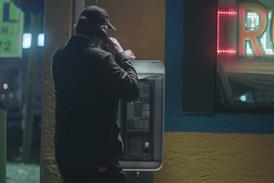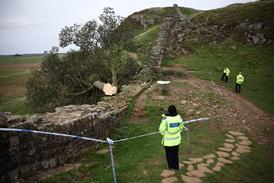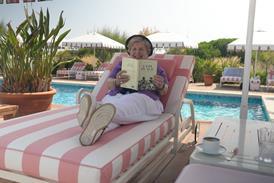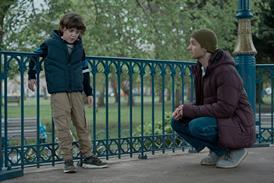Tuesday 27 May
“We went out on the Tuesday lunchtime. We commenced our technical rig and the parachute team - who were very keen to get practicing - went up in the two aircraft and had their first go at it.
We were amazed and delighted to see them get as far as D on their first attempt. That was the other issue. Are we actually asking them to do something that is actually possible? That was a good start.
They did three more jumps on Tuesday afternoon without the pressure of it being filmed. By the end of the Tuesday it looked like the jumping side was going to be possible.
Wednesday 28 May AM
On Wednesday morning we started at looking to do things on camera. We didn't approach the timing issue at that point. We were planning to do 10 jumps on Wednesday culminating in an as-live rehearsal on Wednesday night. And the idea was to go gradually. To do jump one, see where that takes us. Time the jumps carefully, see how consistent we were from ‘wheels up' to ‘exit aircraft' and see how that fitted with our plans.
Also at the same time the specialist camera team were trying to rig their cameras around the aircraft and on the jumpers. And of course they keep going up and doing parachute jumps!
We would get one camera rigged, they'd do a jump. We'd get another camera rigged and they'd do another jump.
So it wasn't until Wednesday's as-live rehearsal that we actually had everything we were planning to have in place. Throughout the day we'd been adjusting camera angles and lenses and refining transmitter positions. And re-balancing the angle of transmission.
If you imagine it's a cone that comes out of the transmitter if somebody is lying down on their belly in freefall it comes straight to the ground. As soon as the parachute goes up they're firing that transmission miles and miles away and losing signal at the crucial moment. I was very keen to get the shot as they let go of the aircraft and the aircraft recedes in the distance. What was happening at the crucial moment was the picture would go.
Wednesday 28 May PM
We get to Wednesday night. We'd got good strong signals from radio links. We'd got the timing fairly consistent. We probably had three out of the ten jumps where they may not have jumped within the time of the commercial we were running.
The issue was with cloud. Because the aircrafts were flying in formation they had to have visual contact. They couldn't fly through cloud on the climb so if they had cloud they had to go around it, making the journey longer.
When they got to the drop zone, thin could was fine but thick cloud meant they couldn't see each other to do the formation. We would say ‘there is your green light, we'd like you to jump now', whenever you're ready' and we'd hear back from the aircraft ‘going in about two minutes'.
The way we had our timings worked, we'd go on air at 20:10 and around 40 seconds into that 3:10 time slot we'd put the green light on and they would exit the aircraft. We'd look for the jump to happen about one minute ten in. The jump takes seventy seconds. If they didn't jump within one minute of the green light we were getting to the point where they wouldn't complete the sequence before we came off air.
It being a commercial, as wonderful and helpful C4 presentation guys were, the commercial break just isn't designed to be variable. We knew that if there was clear skies we were pretty sure to get a jump on cue. If it was cloudy really we wouldn't know until the moment they opened the door whether or not they were going to get out when we needed them to.
We worked through that on Wednesday. We had a great live rehearsal. It was one of those moments where we'd never really had all of the cameras working all at once. We'd never had everything come together. Every jump we had something go well and something not go well. Whether it was a camera cable that was damaged on a jumper or one of the jumpers had been fiddling with his camera on the way up and forgotten to switch it back into the correct mode.
Where we had four cameras on aircraft we didn't have four signals coming down. We had them switched and they went into one transmitter beaming one signal down. From the ground the remotely switched camera was being transmitted to us. If you wanted to cut from the handheld inside the aircraft to the camera looking at the door of the aircraft we had to do a separate cut from the ground and sometimes we lost that switching ability or if we lost that transmitter we'd lose four cameras.
All of our rehearsals had some issues, practically or technically or related to the weather. Come 9:10 local time we had this lovely evening sunset. The clouds cleared away and everything worked. We had a great looking rehearsal. We came off air thoroughly heartened that it could be done but almost a bit despondent that ‘oh my God will we do another?'
I find that in live telly the best thing that you can have is a terrible rehearsal as it makes everyone aware of what can do wrong. If nothing has gone wrong no one is checking to make sure it doesn't go wrong again.
We knew we had a fighting chance of getting it done on Thursday if all went well.”
The Honda “Difficult is worth doing” commercial is a North One production in association with 4 Creative.


























No comments yet